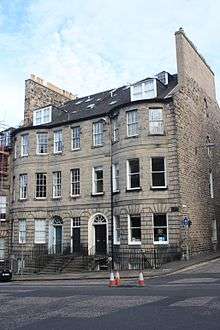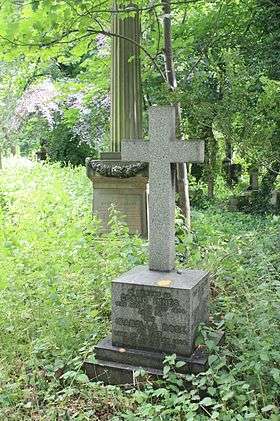Cosmo Innes

Cosmo Nelson Innes FRSE (9 September 1798 – 31 July 1874) was a Scottish advocate, judge, historian and antiquary. He served as Advocate-Depute, Sheriff of Elginshire, and Principal Clerk of Session.
He was a skilled decipherer of ancient Scottish records and helped to compile, edit and index Acts of the Scottish Parliament 1124–1707. He was said to be tall, handsome but shy. He was accused of being a Catholic sympathiser whilst it remained illegal, and joined the newly created Scottish Episcopal Church, close in practice to the Catholic Church. Dean Ramsay, head of the Episcopal Church, was one of his friends.
Life


Born in Durris Castle to Euphemia Russell and John Innes of Leuchars WS. His middle name, Nelson, is almost certainly to mark Horatio Nelson's then recent victory at the Battle of the Nile in August 1798. Thirteen of his 14 siblings died, only he and his sister Elizabeth survived.[1] His friends included Alexander Forbes Irvine (1818–1892), whose career closely paralleled his own.[2]
He was educated at Edinburgh High School, then at the University of Edinburgh under Professor James Pillans.[3] He then undertook further studies at the universities of Aberdeen and Glasgow, and at Balliol College, Oxford (1817–1820)[4] graduating with a BA 1820. He was admitted to the Faculty of Advocates in 1822, and was appointed Professor of Constitutional Law and History at the University of Edinburgh in 1846.
In the 1830s he lived in Allan Ramsay's former house, Ramsay Lodge, at the top of the Royal Mile (later absorbed into Ramsay Gardens).[5] He had offices with his brother, Thomas Innes, at 51 North Castle Street in the New Town.[6]
From 1840 to 1852 he was Sheriff of Moray during which time he had to deal with protesters angry at the export of potatoes from their district to mitigate the effects of the Irish potato famine. He resigned this role in 1852 to succeed Thomas Thomson in the role of Principal Clerk of Session in the Scottish Court of Session.[3]
In 1843 he became a member of the Edinburgh Calotype Club one of the world's first photographic societies.[7] He was also a member of the Spalding Club, Maitland Club and Bannatyne Club.[3]
In 1858 he was elected a Fellow of the Royal Society of Scotland. His proposer was James Thomson Gibson Craig. He served as the Society's Vice-President 1862–69.
In later life Innes lived in Inverleith House in northern Edinburgh. The house still exists and is in the grounds of Edinburgh's Royal Botanic Garden. The Garden was formed from Innes' former garden grounds.[8]
He died unexpectedly on 31 July 1874 at Killin while on a "Highland Tour" in Killin. He was buried on 5 August at Warriston Cemetery in Edinburgh.[9] The grave lies on the east side of the main west path, just beyond the large Celtic cross to Horatio McCulloch. Given that Innes was one of the richest persons in Edinburgh, the gravestone is exceptionally modest.
Works
He was the author of Memoir of Thomas Thomson, Advocate (1854), Scotland in the Middle Ages (1860), Sketches of Early Scottish History (1861), Lectures on Scotch Legal Antiquities (1872) and Reminiscences of Scottish Life and Character (1875, co-written with Dean Ramsay)). He also edited many historical manuscripts for the Bannatyne Club and other antiquarian clubs. He also frequently wrote for the Quarterly Review and North British Review.
Photographic works include "A Tour: The Coast of Spain" (an album of 1857); Midcalder Church (1856); Dunrobin Castle (1856); and Elgin Cathedral (1856).[10]
Family
In 1826 Innes married Isabella Rose, daughter of Hugh Rose of Kilravock. They had nine children: four girls and five boys.[1]
His daughter Katherine Innes married historian John Hill Burton in 1855, and another daughter Mary married Robert Finlay, 1st Viscount Finlay, Lord Chancellor of Great Britain.[11][12] Their other children included engineer W. K. Burton, the artist Mary Rose Hill Burton and the chemist Professor Cosmo Innes Burton FCS FRSE.
From 1836 he and his wife were appointed the formal guardian of Miss Isabella Grant, daughter of Patrick Grant who had died in India. In 1844 her uncle Captain Alexander Grant challenged the guardianship, however the court found the challenge inappropriate as her home was wholly appropriate and was the will of her father.[13]
References

- 1 2 "Susan's Family History Site". www.wauchopecottage.co.uk. Retrieved 2018-01-20.
- ↑ "Obituary – Alexander Forbes Irvine of Drum. By Sheriff Æneas Mackay. (Read January 30, 1893.)". cambridge.org. Retrieved 2018-02-11.
- 1 2 3 http://www.andywightman.com/docs/Cosmo_Innes_Oxford_biog.pdf
- ↑ "Innes, Cosmo Nelson (INS850CN)". A Cambridge Alumni Database. University of Cambridge.
- ↑ "Edinburgh Post Office annual directory, 1832-1833". National Library of Scotland. Retrieved 2018-01-20.
- ↑ Edinburgh and Leith Post Office Directory 1840–41
- ↑ "Pencils of Light". National Library of Scotland. Retrieved 2018-01-20.
- ↑ Edinburgh and Leith Post Office Directory 1870–1871
- ↑ Biographical Index of Former Fellows of the Royal Society of Edinburgh 1783 – 2002 (PDF). The Royal Society of Edinburgh. July 2006. ISBN 0 902 198 84 X.
- ↑ "PSS Members - Cosmo Innes". www.edinphoto.org.uk. Retrieved 2018-01-20.
- ↑ "Mary Innes". The Peerage, A genealogical survey of the peerage of Britain as well as the royal families of Europe. Retrieved 2013-02-28.
- ↑ W. W. Wroth, ‘Innes, Cosmo Nelson (1798–1874)’, rev. H. C. G. Matthew, Oxford Dictionary of National Biography, Oxford University Press, 2004 accessed as archived article (no longer current version)
- ↑ Cases Decided in the Court of Session 1844, December 14, case 34
External links
| Wikisource has original works written by or about: Cosmo Innes |
Links to several of his works:
- Barbour, Johne (1375), Innes, Cosmo, ed., The Brus, Aberdeen: The Spalding Club (published 1856), retrieved 2008-08-17 - in Scots
- Innes, Cosmo (1860), Scotland in the Middle Ages, Edinburgh: Edmonston and Douglas, retrieved 2008-08-17
- Innes, Cosmo (1861), Sketches of Early Scotch History and Social Progress, Edinburgh: Edmonston and Douglas, retrieved 2008-08-17
- Innes, Cosmo (1868), Ancient Laws and Customs of the Burghs of Scotland (A.D. 1124 – 1424), I, Edinburgh: The Scottish Burgh Records Society, retrieved 2008-08-17
- Innes, Cosmo (1872), Lectures on Scotch Legal Antiquities, Edinburgh: Edmonston and Douglas, retrieved 2008-08-17
- Katherine Burton, Memoir of Cosmo Innes (1874)
![]()